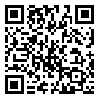BibTeX | RIS | EndNote | Medlars | ProCite | Reference Manager | RefWorks
Send citation to:
URL: http://ijpcp.iums.ac.ir/article-1-2675-en.html
2- Department of Psychiatry, School of Medicine, Tehran University of Medical Sciences
3- Department of Community Medicine, School of Medicine, Tehran University of Medical Sciences
Objectives: The aim of present study was to investigate the predictive role of Mindfulness, Emotion regulation, Distress tolerance, Interpersonal effectiveness (by controlling the effects of demographic variables, depression and anxiety).
Methods: The study design was correlational. A total of 240 students of Tehran University of Medical Sciences were selected using stratified proportional sampling method. Data were collected using five facet mindfulness questionnaire (FFMQ), Distress Intolerance scale(DTS), Difficulties in Emotion Regulation Scale (DERS), Bar-On Emotional Quotient Inventory (BEQI), Depression, Anxiety and Stress Scale -21 (DASS -21), Obsessive- Compulsive Inventory – Revised (OCI-R) and demographic data questionnaire. The gathered data was analyzed using Pearson correlation and hierarchical regression
Results: The highest correlation relationships was between obsession sub-type with total score of mindfulness (r=-0.47), total score of emotion regulation (r=0.56), absorption sub-scale of distress tolerance (r=-0.38), total score of interpersonal effectiveness (r=-0.43), total score of depression (r=0.49), and total score of obsessive-compulsive symptoms with anxiety (r=0.5). The results of regression analysis indicated that control and predictive variables account for 43% of obsessive-compulsive symptoms variance, 27% of washing variance, 49% of obsessing variance, 22% of hoarding variance, 8% of ordering variance, 32% of checking variance, and 45% of neutralizing variance. So that their weight percentages in models of all OCDs were higher than the predictor variables. This highlights the necessity of considering these variables in research and treatment of the symptoms of obsessive-compulsive disorder. Theoretical and clinical implications of the results have been discussed in detail.
Conclusions :Control and predictive variables play a role in the prediction of the total score of obsessive-compulsive symptoms and all sub-types. However, different variables involved in sub-types may be considered as distinctive pathology among sub-types. The highest correlation relationship and accounted variance through study variables were in the case of obsessing. The results also indicate the noticeable role of depression and anxiety in the prediction of all sub-types.
Received: 2017/03/12 | Accepted: 2017/01/1 | Published: 2017/03/12
| Rights and permissions | |
 |
This work is licensed under a Creative Commons Attribution-NonCommercial 4.0 International License. |





